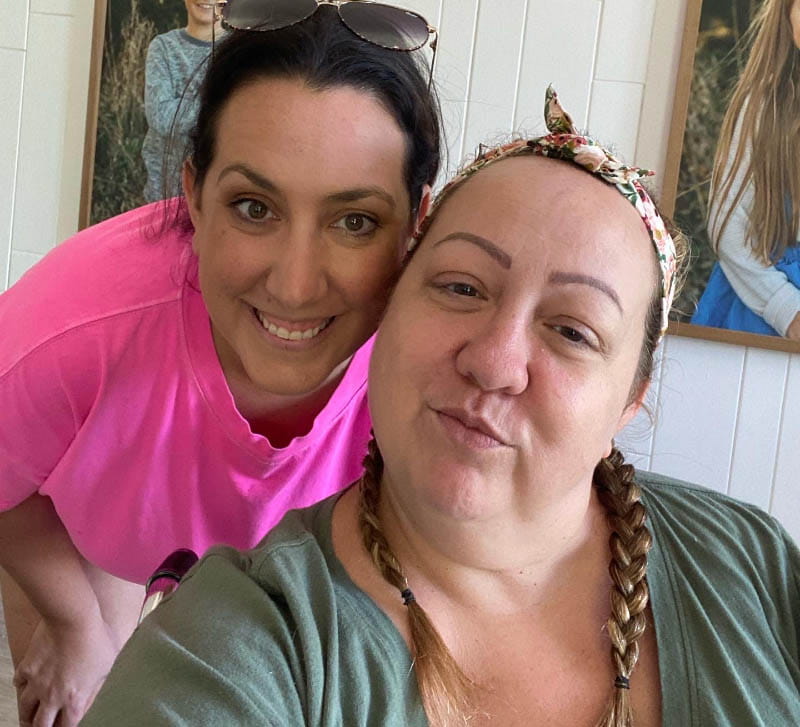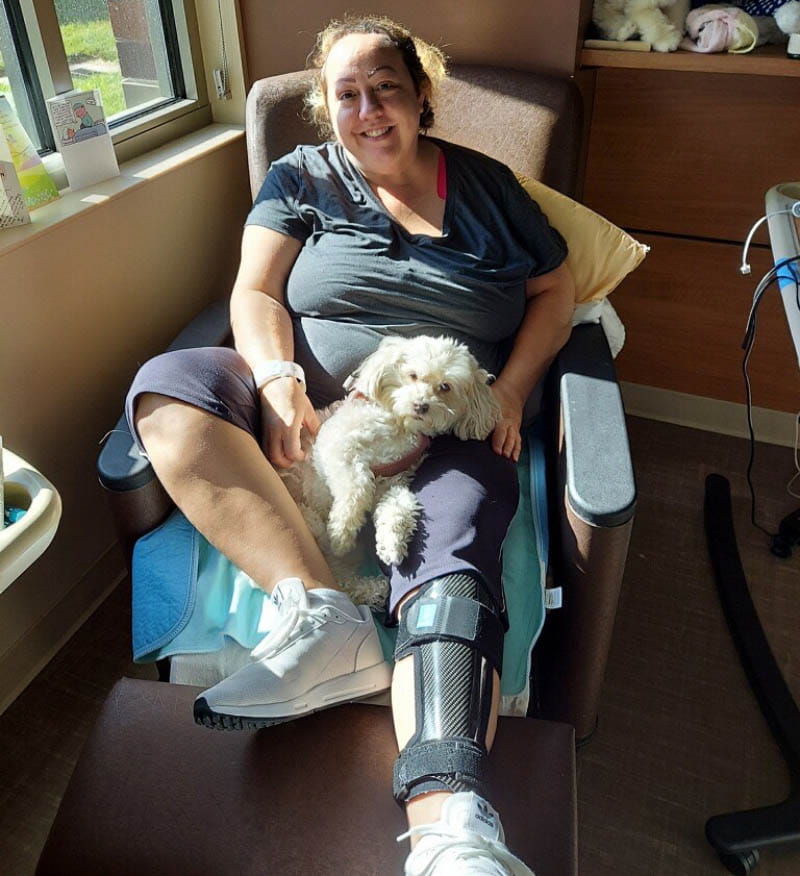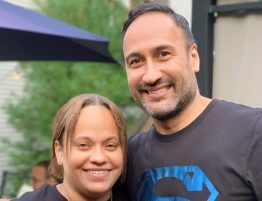
Jamie Stevens went back home to Garnett, Kansas, for her grandmother’s funeral and to spend time with her family. After watching her niece’s soccer game, Stevens felt a stronger headache than usual.
For the past few months, the headaches had been common, a byproduct – she figured – of the stress from her job in property management.
This one hit her in more ways. Sitting on a couch, she felt exhausted and sick to her stomach. She told her sister and mother, “I feel like I’m shaking all over.”
She looked perfectly still. Her sister figured she was joking. Until Stevens started to say something and slid down the couch onto the floor.
“Jamie, get up!” said her sister, Ashley Sample.
“I can’t,” she slurred.
That’s when Sample, a nurse, knew something was wrong.
She ran to her sister and saw that she couldn’t move her left side. She knew Stevens likely was having a stroke.
By the time the ambulance arrived, within 10 minutes, Stevens was vomiting continuously.
Responders said they thought that Stevens, who was 44, was having an anxiety attack. They attributed her extremely high blood pressure to the vomiting.
“Believe me, it’s not a panic attack,” Sample said. “I think she’s having a stroke.”

At the hospital, the doctor also focused on anxiety as the cause for Stevens’ symptoms.
Sample knew this doctor; she’d worked with him before. She assured him that anxiety was not the cause. Finally, he agreed to order a brain scan.
When he returned with the results, he looked shocked and frightened.
She has bleeding in her brain, and it’s really bad, Sample recalled him saying.
Stevens was transported by helicopter to a larger hospital. A drain was connected to her brain to reduce the swelling.
Three days later, Stevens woke up and started pulling on all the cords and tubes she was attached to. Her speech had returned, and she called out for help. She tried to get out of bed but couldn’t move her left side. She was angry and scared.
Once calmed, Stevens was told her hemorrhagic stroke was caused by prolonged and dangerously high blood pressure. She’d been told in the past that her blood pressure was high, but she had no idea how serious that could be. She had never been prescribed medication for it.
“When will I walk again?” she asked the doctor.
Every stroke is different, he told her, but he predicted she’d probably be in a wheelchair for two years.
The good news, though, was that she had few cognitive deficits. Building off that fact, her professional experiences and knowing her sister’s resolve, Sample said: “Jamie, don’t listen to them. I know you’ll be walking sooner than that.”
As Stevens relaxed, her personality returned. This included entertaining her visitors with the skills honed by performing improv comedy for a few years. She also befriended the staff by keeping a bowl of candy handy.
After a couple weeks, her favorite visitor arrived from her home in Florida – Pearl, her Maltese schnauzer mix. She’d found the small dog two years earlier running down the street “with five pounds of matted hair.”
Family members who happened to be vacationing in Florida delivered Pearl to her. As soon as Pearl saw Stevens sitting in a wheelchair, she jumped on her lap. Stevens’ mother or a friend took the dog to the hospital nearly every day.

Stevens went from the hospital to a rehabilitation facility, where she had physical and occupational therapy daily. Within weeks, she was able to move her left arm and upper body. She even regained some use of her legs.
Walking remained a struggle.
“One day this will all be a memory,” a physical therapist told her.
Stevens focused on that idea and pushed harder to improve. She was released from rehab after four weeks, went to a skilled nursing facility for 10 days and then stayed with her mother for another two weeks.
Two months after her stroke, Stevens and Pearl, plus Sample and her husband, boarded a plane to Florida.
Sample stayed for a few days, then a large network of friends helped with daily tasks, such as cooking, cleaning and walking Pearl.
Stevens felt timid at first, fearful of falling and of crowds. Improv friends held a benefit for her, but it was soon after she arrived home and she wasn’t ready to go out in such a public setting.
The stroke was in May 2022. In December, she graduated from physical therapy. Although she still has some numbness and strange sensations, the only visible sign of her stroke is a slight limp in her left leg.
Stevens wasted no time in getting back on stage.
Within a month of being home, she performed a few bits from a wheelchair. By the end of the year, she was on stage without any assistance. She’s now performing monthly.
“It’s been awesome,” she said. “I feel comfortable there. I get excited.”
Stevens has made several lifestyle changes, including losing more than 50 pounds and counting. She’s also on medication to control her blood pressure.
Her sister and other family members also are paying more attention to their nutrition and fitness.
“Honestly, it’s been a wake-up call for all of us,” Sample said.
Stevens hopes her story helps other stroke survivors, especially younger ones.
“All I want to do is be there for someone else,” she said. “I want to tell them to not give up, because it does get easier.”
Stories From the Heart chronicles the inspiring journeys of heart disease and stroke survivors, caregivers and advocates.






